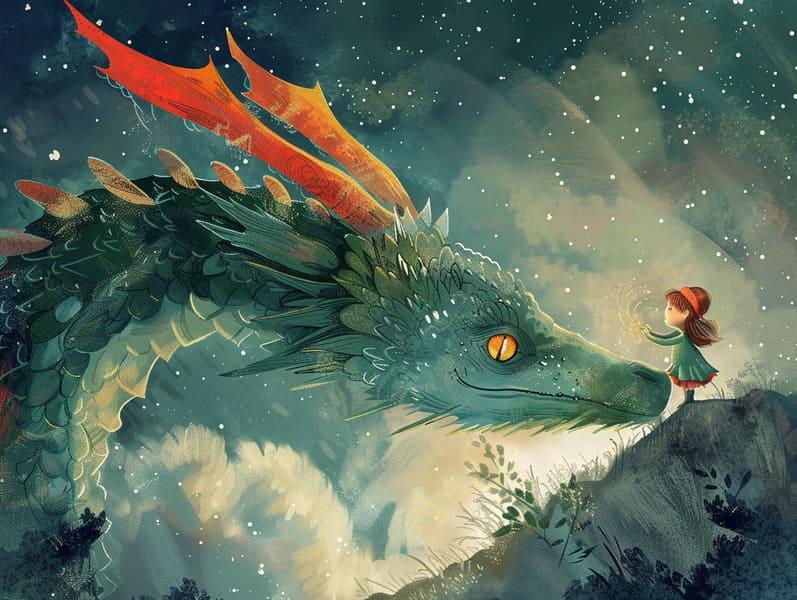
Children's fairy tales have long histories. These tales have been transmitted from one generation to the next far before they were ever transcribed. They were born from a variety of backgrounds, including African traditions. They were initially shared among older generations, often carrying themes and messages relevant to the societal norms and beliefs of the time.
Jacob and Wilhelm Grimm, Jacob and Wilhelm (the Grimm brothers), were among the first to collect and release many of these beloved tales. Their compilation, "Grimm's Fables," included classics like "The Little Glass Slipper," "Hansel and Grethel," and "The True Story of Snow White," which have since become essentials in the world of timeless fairy tales. Similarly, H. C. Andersen's whimsical narratives, such as "The Story of the Little Mermaid," and "The Ugly Duckling," have won hearts worldwide, cementing their place in the pantheon of treasured fairy tales.
Even though they are old, these tales remain as pertinent as ever, especially as kids' bedtime tales. These enchanting tales are now available in diverse formats, including artistically illustrated books, fantastical animations, and web-based fairy tales.
Their continued relevance can be credited to several enchanting factors:
Ethical Lessons: Timeless fairy tales often share important moral lessons. Tales like "The Tale of the Boy Who Cried Wolf" teach the importance of being truthful, while "The Story of the Tortoise and the Hare" demonstrate the qualities of tenacity and modesty. These tales offer young ones clear distinctions between truth and falsehood, developing their moral compass in a subtle yet lasting way.
Compassion and Insight: Old fairy tales frequently involve protagonists facing tests and troubles, fostering kids to sympathize with their struggles and applaud their triumphs. For instance, "The Tale of Beauty and the Beast" points out the significance of valuing inner qualities to realize the true character of a soul, fostering warmth and recognition.
Cultural Recognition: Many traditional fairy tales are rooted in the cultural contexts from which they emerged. Understanding these stories can provide informative snapshots into different societies, fostering a sense of world insight and appreciation.
Inventiveness and Imagination: The extraordinary elements in traditional fairy tales—magical spells—enhance children’s innovative ideas. These stories lead readers to extraordinary realms, boosting imaginative dreams and a sense of delight that continues a lifetime.
Ancient fairy tales are not only delightful but also educational. They provide mesmerizing tools in fostering various intellectual and emotional capacities in children. When fairy tales are recited, they strengthen language proficiency by presenting new phrases and detailed sentence structures. This practice also fosters listening skills and attention span, as young ones keep up with the story, enthusiastic to see what happens next.
Furthermore, conversing about the themes and characters of fairy tales can promote analytical skills and thinking skills. Kids are instructed to spot patterns, make predictions, and know cause and effect. These deliberations also boost young readers convey their thoughts and feelings, promoting their emotional intelligence.
In today’s cyber age, the existence of digital fairy tales has made these tales more within reach than ever. Internet resources and software provide extensive collections of classic fairy tales that can be experienced or listened via anytime, anywhere. Fairy tales recited are particularly prevalent, presenting an fun way for little ones to find it here relish these alluring stories. Read-aloud books and read-aloud videos take characters and settings to life, often paired with charming soundtracks and musical scores that enhance the storytelling journey.
The unfading fascination of timeless fairy tales lies in their ability to adapt to changing times while holding onto their essential themes. Contemporary renditions of these tales often bring in more multicultural protagonists and modern settings, making them relevant to today’s audience. However, the central morals of gallantry, charity, and truth remain unchanged, continuing to appeal to readers of all ages.
Fairy tales also offer a sense of serenity and knowability. They render a organized narrative with a transparent beginning, middle, and end, often wrapping up with the resolution of conflicts and the triumph of morality over immorality. This certainty can be placating for children, imparting a sense of assuredness in an fluid world.
Classic fairy tales continue to mesmerize and educate new generations, maintaining their fascination and applicability in modern society. As children's night stories, they supply a perfect blend of magic and knowledge, enhancing moral values, empathy, and creativity. The availability of free fairy tales online and the commonness of fairy tales read aloud warrant that these traditional fairy tales remain within reach to new generations.
By conserving and spreading these stories, we continue to honor the rich tapestry of mythology and cultural heritage. Whether you are enjoying a artistically illustrated book, perusing a electronic library, or listening through an audiobook, the charm of bedtime fairy tales is always within reach. These stories teach us of the persistent force of tales and its ability to link us across epochs and places.
No matter if you are seeing a beautifully illustrated book, experiencing a virtual library, or playing an voice book, the grace of popular fairy tales is always within reach.
These stories show us of the enduring impact of narratives and its ability to bond us across centuries and lands, forming a connection that fascinates and enlightens alike.